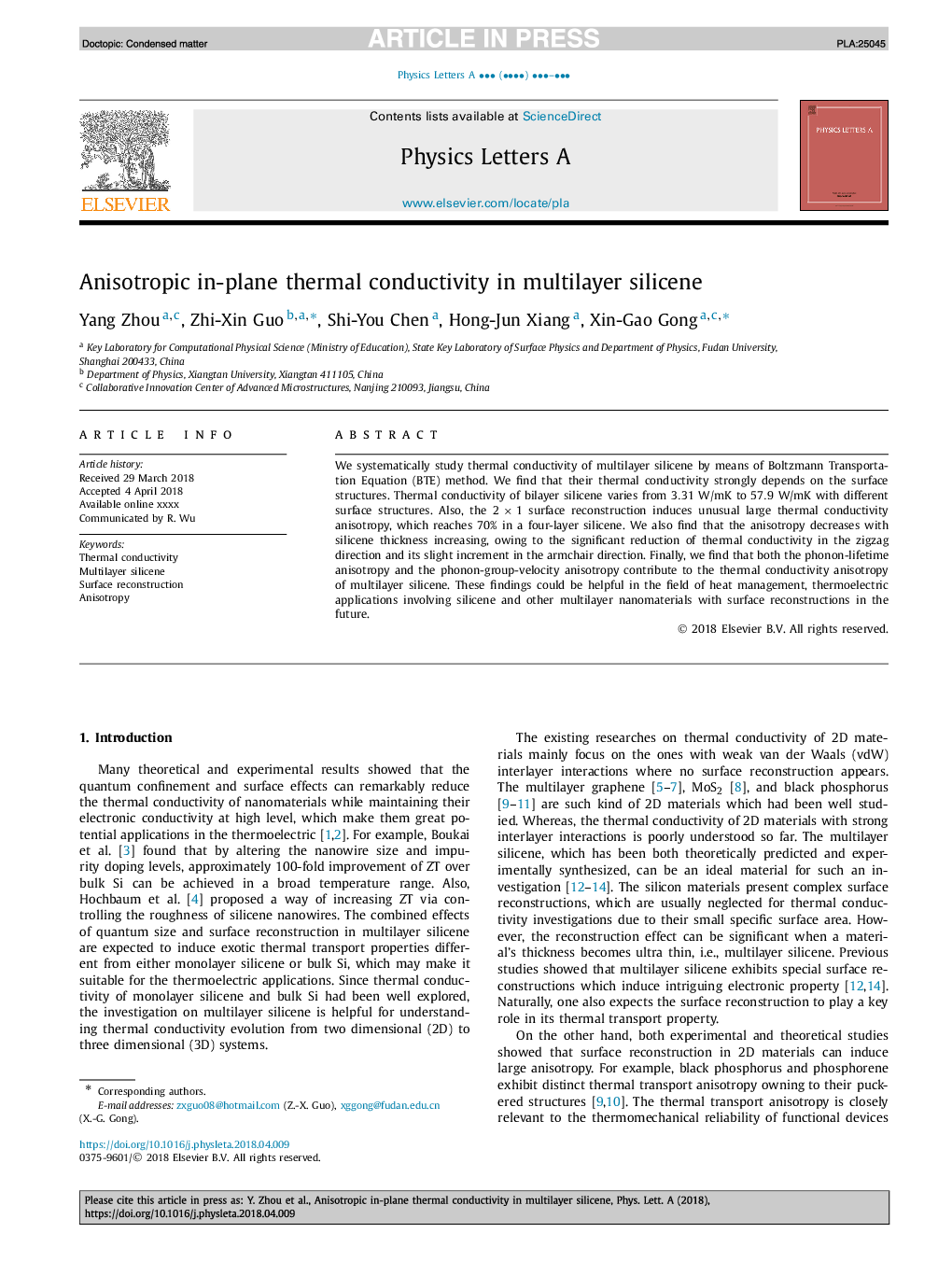| Article ID | Journal | Published Year | Pages | File Type |
|---|---|---|---|---|
| 8203414 | Physics Letters A | 2018 | 5 Pages |
Abstract
We systematically study thermal conductivity of multilayer silicene by means of Boltzmann Transportation Equation (BTE) method. We find that their thermal conductivity strongly depends on the surface structures. Thermal conductivity of bilayer silicene varies from 3.31 W/mK to 57.9 W/mK with different surface structures. Also, the 2Ã1 surface reconstruction induces unusual large thermal conductivity anisotropy, which reaches 70% in a four-layer silicene. We also find that the anisotropy decreases with silicene thickness increasing, owing to the significant reduction of thermal conductivity in the zigzag direction and its slight increment in the armchair direction. Finally, we find that both the phonon-lifetime anisotropy and the phonon-group-velocity anisotropy contribute to the thermal conductivity anisotropy of multilayer silicene. These findings could be helpful in the field of heat management, thermoelectric applications involving silicene and other multilayer nanomaterials with surface reconstructions in the future.
Related Topics
Physical Sciences and Engineering
Physics and Astronomy
Physics and Astronomy (General)
Authors
Yang Zhou, Zhi-Xin Guo, Shi-You Chen, Hong-Jun Xiang, Xin-Gao Gong,
